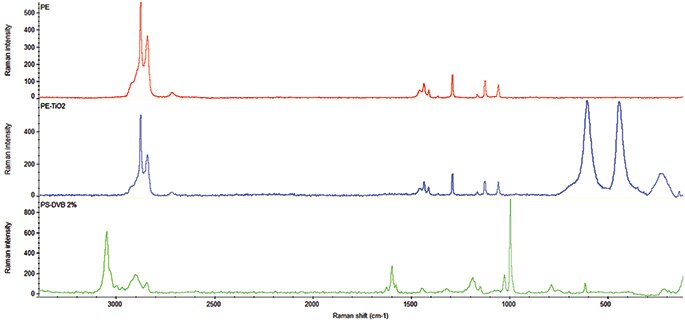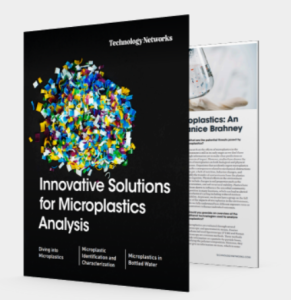MICROPLASTICS ANALYSIS SOLUTIONS- FTIR & RAMAN SPECTROSCOPY

What are Microplastics?
Microplastics are tiny plastic fibers and fragments (smaller than 5 mm in size) that are polluted into the environment from plastics used in everyday items and manufacturing processes.
They are predominantly made up of polystyrene, polypropylene and polyethene and can be divided into two types:
1. Primary microplastics:
Directly released into the environment (e.g. microbeads in facial cleansers)
2. Secondary microplastics:
Originate from the degradation of larger plastic objects over time.
How Do You Analyze Microplastics?
Fourier Transform Infrared (FTIR) and Raman spectroscopies have long been used for the analysis of polymers, and it is, therefore, natural that they be the de facto techniques to identify microplastics.
These techniques use the ability of light to interact with molecules causing them to vibrate at given frequencies. As a result, a spectrum (or a peak pattern of absorbed or emitted frequencies – Figure 1) can provide a “molecular fingerprint” of a microparticulate, providing the identity of its components.
For particles >1 μm, the Thermo Scientific DXR3xi Raman Imaging Microscope offers the analytical power to discern microplastics from other contaminants with high-spatial-resolution down to 0.5 µm. The multivariate analysis algorithms of the Thermo Scientific OMNIC Software allows for spectral identification across a spectral library of plastics and polymers. The DXR3xi Raman Microscope has auto alignment and calibration capabilities to ensure accurate measurements and consistency between operators, supporting recommendations made by the EPA working group. This microscope quickly images large surface areas across the sample filter, making it a fast, reliable method for comparing multiple particulates and identifying their chemical components.
For microplastic particles >10 μm, the Thermo Scientific Nicolet iN10 MX FTIR Imaging Microscope offers similar chemical imaging capabilities with speed and efficiency.

Figure 1: Raman spectra of the microplastic standards: PE – polyethylene; PE-TiO2 polyethylene-titanium dioxide; PS-DVB – polystyrene-divinylbenzene.
How to Detect Microplastics In Bottled Water?
The sample used in this investigation was a commercially available 500 ml bottle of drinking water. The drinking water was filtered using the Thermo Scientific™ Microparticle Sample Preparation Kit. The kit utilizes a 10 x 10 mm silicon filter that can be used for transmission FTIR analysis, reflection FTIR analysis, or Raman analysis of the isolated particles.

The silicon filters were then analyzed using both a Thermo Scientific™ Nicolet™ iN10 MX FTIR Imaging Microscope and a Thermo Scientific™ DXR2 Raman Microscope. Both of these instruments utilized software options specifically designed for automated particle analysis. The Nicolet iN10 MX FTIR Imaging Microscope uses the Particle Wizard option in the Thermo Scientific™ OMNIC™ Picta™ Software and the DXR2 Raman Microscope uses the Particle Analysis option that is part of the Thermo Scientific™ Omnic™ Atlus Software and the Thermo Scientific™ Omnic™ for Dispersive Raman Software. Download the application note to continue reading.
Generic Workflow For Microplastics Analysis
The below sample workflow diagram shows a typical process, from sample preparation to microplastics analysis.

Analytical Instruments for Microplastic Analysis
Use the below guide to find the best Thermo Scientific™ Nicolet™ FTIR and Thermo Scientific™ DXR3 Raman Spectroscopy Solution to help you identify, quantify and characterize microplastics (<5 mm) found in a variety of sample types (environmental, food, beverage).

Download this eBook to learn more about:
- The impact of microplastic pollution
- Challenges for microplastic research
- The impact of FTIR and Raman Spectroscopy
View eBook now!
This information has been sourced from materials provided by Thermo Fisher Scientific. For more information on this source, please visit here.
Need Help with Microplastic Analysis?
Please fill-up the form below. Our team will contact you as soon as possible. Thank you


